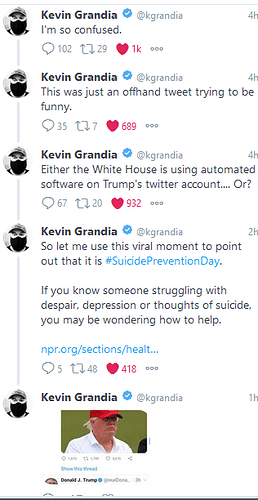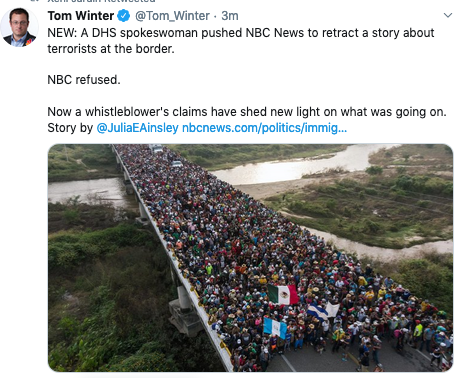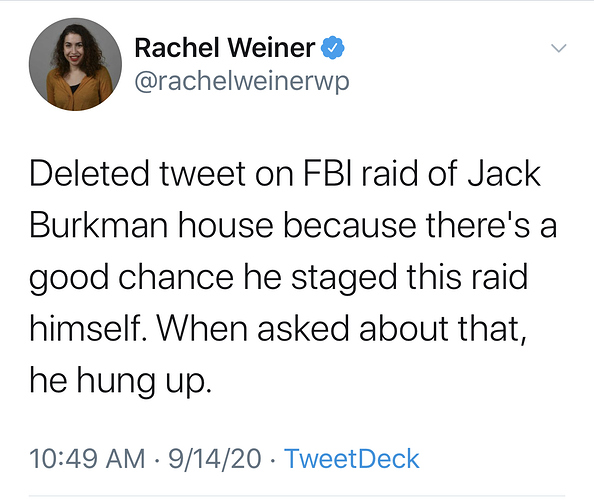Wildfire smoke that posed a health hazard to millions choked the West Coast on Saturday as firefighters battled deadly blazes that obliterated some towns and displaced tens of thousands of people, the latest in a series of calamities this year.
For people already enduring the coronavirus pandemic, the resulting economic fallout and political tensions evident in the Black Lives Matter protests and far-right counter protests, the fires added a new layer of misery.
“What’s next? You have the protests, coronavirus pandemic, now the wildfires. What else can go wrong?” lamented Danielle Oliver, 40, of Happy Valley, southeast of Portland.
The death toll from the fires in California, Oregon and Washington stood at 31 and was expected to rise sharply. Most of the fatalities were in California and Oregon.
Oregon’s emergency management director said officials were preparing for a possible “mass fatality event” if many more bodies turn up in the ash. And the state fire marshal resigned after abruptly being placed on administrative leave. The state police superintendent said the crisis demanded an urgent response that required a leadership change.
Oliver has an autoimmune disorder that makes her vulnerable to wildfire smoke, so she agreed to evacuate. She was nervous about going to a shelter because of the virus, but sleeping in a car with her husband, 15-year-daughter, two dogs and a cat was not a viable option.
Oregon Governor Kate Brown toured the Oregon State Fairgrounds in Salem, Ore., Saturday afternoon, Sept. 12, 2020, where she spoke with volunteers and evacuees. Brown also toured the animal facility where evacuated animals are being kept. Fires along Oregon’s Cascade Range grew Saturday, but at a slower rate than earlier in the week. (Beth Nakamura/The Oregonian via AP, Pool)
SALEM, Ore. (AP) — Wildfire smoke that posed a health hazard to millions choked the West Coast on Saturday as firefighters battled deadly blazes that obliterated some towns and displaced tens of thousands of people, the latest in a series of calamities this year.
For people already enduring the coronavirus pandemic, the resulting economic fallout and political tensions evident in the Black Lives Matter protests and far-right counter protests, the fires added a new layer of misery.
“What’s next? You have the protests, coronavirus pandemic, now the wildfires. What else can go wrong?” lamented Danielle Oliver, 40, of Happy Valley, southeast of Portland.
The death toll from the fires in California, Oregon and Washington stood at 31 and was expected to rise sharply. Most of the fatalities were in California and Oregon.
Oregon’s emergency management director said officials were preparing for a possible “mass fatality event” if many more bodies turn up in the ash. And the state fire marshal resigned after abruptly being placed on administrative leave. The state police superintendent said the crisis demanded an urgent response that required a leadership change.
Oliver has an autoimmune disorder that makes her vulnerable to wildfire smoke, so she agreed to evacuate. She was nervous about going to a shelter because of the virus, but sleeping in a car with her husband, 15-year-daughter, two dogs and a cat was not a viable option.
The temperature checks and social distancing at the American Red Cross shelter helped put her mind at ease. Now the family waits, hoping their house will survive. She has previously experienced homelessness.
“I’m tired. I’m tired of starting all over. Getting everything, working for everything, then losing everything,” she said.
Those who still had homes were not safe in them. A half-million Oregonians were under evacuation warnings or orders to leave. With air contamination levels at historic highs, people stuffed towels under door jambs to keep smoke out. Some even wore N95 masks in their own homes.
Some communities resembled the bombed-out cities of Europe after World War II, with buildings reduced to charred rubble piled atop blackened earth. Residents either managed to flee as the flames closed in, or perished.
Millicent Catarancuic’s body was found near a car on her 5-acre property in Berry Creek, California. The flames came so quickly she did not have time to get out.
On Tuesday, she packed several of her dogs and cats in the car but later called her daughter to say she decided to stay. Firefighters had made progress battling the blaze. The wind was calm. The flames still seemed far away. Then they rushed onto the property.
“I feel like, maybe when they passed, they had an army of cats and dogs with her to help her through it,” said her daughter, Holly Catarancuic.
In Oregon alone, more than 40,000 people have been evacuated and about 500,000 are in different levels of evacuation zones, Gov. Kate Brown said.
Fires along Oregon’s Cascade Range grew Saturday, but at a slower rate than earlier in the week, when strong easterly winds acted like a bellows, pushing two large fires — the Beachie Creek Fire and the Riverside Fire — toward each other and the state’s major population centers, including Portland’s southeastern suburbs.
Fire managers did get a spot of good news: Higher humidity slowed the flames considerably.
In California, a total of 28 active major fires have burned 4,375 square miles, and 16,000 firefighters are trying to suppress the flames, Cal Fire Assistant Deputy Director Daniel Berlant said. Large wildfires continued to burn in northeastern Washington state too.
In all, 22 people have died in California since wildfires began breaking out across the state in mid-August.
President Donald Trump will visit California on Monday for a briefing on the West Coast fires, the White House announced.
Democratic presidential candidate Joe Biden and the governors of California, Oregon and Washington state — all Democrats — have said the fires are a consequence of global warming.
“We absolutely must act now to avoid a future defined by an unending barrage of tragedies like the one American families are enduring across the West today,” Biden said.
The same smoke that painted California skies orange also helped crews corral the state’s deadliest blaze of the year by blocking the sun, reducing temperatures and raising humidity, officials said.
Smoke created cooler conditions in Oregon too, but it was also blamed for making the dirtiest air in at least 35 years in some places. The air quality index reading Saturday morning in Salem, the state capital, was 512.
The scale normally goes from zero to 500.
“Above 500 is literally off the charts,” said Laura Gleim, a spokesperson for the Oregon Department of Environmental Quality.
Because past air quality was rarely so poor, the government’s yardstick for measuring it capped out at 500, Gleim said. The department started monitoring in 1985.
The weather conditions that led up to the fires and fed the flames were likely a once-in-a-generation event, said Greg Jones, a professor and research climatologist at Linfield University in McMinnville, Oregon.
A large high-pressure area stretching from the desert Southwest to Alaska brought strong winds from the east toward the West Coast, reducing relative humidity to as low as 8% and bringing desert-like conditions, even to the coast, Jones said.
Instead of the offshore flows that the Pacific Northwest normally enjoys, the strong easterly winds pushed fires down the western slopes of the Cascade Range.
It isn’t clear if global warming caused the conditions, Jones said, but a warmer world can increase the likelihood of extreme events and contribute to their severity.
The smoke in Portland filled the air with an acrid metallic scent like dull pennies. It was so thick that Ashley Kreitzer could not see the road when she headed out to work as a ride-hailing driver.
“I couldn’t even see five feet ahead of me,” she said. “I was panicking, I didn’t even know if I wanted to go out.”
George Coble had no home to return to. He came with some of his employees Saturday to a wasteland of charred tree trunks just outside Mill City, Oregon. Coble lost everything: his fence-and-post business, five houses in a family compound and vintage cars, including a 1967 Mustang.
The family – three generations that lived in the compound — evacuated with seven people, three horses, five dogs and a cat.
“We’ll just keep working and keep your head up and thank God everybody got out,” Coble said. “There are other people that lost their family. Just be thankful for what you did get out with.”
Erik Tucker spent the day hauling buckets of water through what remained of his neighborhood to douse hot spots smoldering in tree trunks five days after the wildfire tore through the area.
Tucker, who lives in Lyons, Oregon, had expected the worst but found his family’s home still standing while homes just down the street were gone. He was coated in ash and smudged with charcoal.
“No power, debris everywhere, smoke, can’t breathe,” he said.
Historic wildfires are burning millions of acres and destroying homes in California, Oregon and Washington state, as officials brace for more fatalities and evacuations.
The fires have killed at least 20 people across the states and dozens more are missing. More than 1 million acres of land in Oregon have been burned and at least 10% of the state’s population is in evacuation zones. The state has dealt with the worst destruction as blazes have already decimated two towns.
Oregon Gov. Kate Brown said Friday that people are still missing and more than 40,000 have fled their homes. The state is preparing for a “mass fatality event” and has declared a state of emergency.
Authorities said a man has been arrested and charged with arson in connection with a fire in southern Oregon that has burned hundreds of homes. Oregon’s state fire marshal Jim Walker, who has served since 2014, had been put on administrative leave “pending the outcome of an internal personnel investigation,” the state police department said on Saturday.
In California, more than 3 million acres have burned, a record in the state’s history. The August Complex that started from a series of lightning strikes last month has become the biggest wildfire ever in California.
The weather in California could potentially improve with forecasts of less wind and some rainfall. However, the National Weather Service on Saturday issued a red flag warning in parts of Oregon and Northern California over the weekend, citing gusty winds and low humidity that could worsen the blazes.
Gov. Gavin Newsom of California gave a bleak update on the situation on Friday afternoon, saying the worst forecasts of climate change has impacted his state. He vowed to direct his administration to speed up California’s environmental goals and invest more in green energy.
“California, folks, is America fast forward,” Newsom said during a press conference at the Lake Oroville State Recreation Area in Butte County, which is damaged from the North Complex Fire. “What we’re experiencing right here is coming to communities all across the United States of America unless we get our act together on climate change.”
President Donald Trump will visit California on Monday where he will join local and federal fire and emergency officials to be briefed on the fires. The president is set to visit McClellan Park in Sacramento County, where the state’s fire agency Cal Fire has based its operations.
Washington Gov. Jay Inslee said the amount of land burned by the fires in just the past five days amounts to the state’s second-worst fire season following the season in 2015, and said the fires should be called climate fires, not wildfires. Fires in the state destroyed most of the homes in the town of Malden and killed a 1-year-old boy.
Climate change has triggered excessive heat and drought conditions across the world that exacerbate wildfires. In fire-prone California, six of the 20 biggest wildfires in state history have occurred this year.
“This is not an act of God,” Inslee said at a news conference Friday. “This has happened because we have changed the climate of the state of Washington in dramatic ways.”
Texas Gov. Greg Abbott on Friday said that the state is sending roughly 190 additional firefighters and 50 more trucks to California. Fire crews are also being sent in from Utah and Colorado.
Democratic presidential nominee Joe Biden said the fires demonstrate that climate change poses an “existential threat to our way of life.”
“Our thoughts are also with the millions of Americans living just outside the path of these fires, forced into an awful choice between relocating in the midst of an ongoing pandemic or staying put in a place where every breath they draw forces them to inhale smoke,” Biden said in a statement on Saturday.
“The science is clear, and deadly signs like these are unmistakable — climate change poses an imminent, existential threat to our way of life,” Biden said. “President Trump can try to deny that reality, but the facts are undeniable.”


 Must Read Op-Ed and Profiles
Must Read Op-Ed and Profiles








